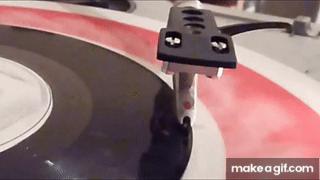
By far the most common fault with gramophone records of all eras is eccentricity due to the spindle-hole not being coïncident with the exact centre of the groove spiral. This being a function of a manual step in manufacturing a record.


By far the most common fault with gramophone records of all eras is eccentricity due to the spindle-hole not being coïncident with the exact centre of the groove spiral. This being a function of a manual step in manufacturing a record.
The WOW! pitch-correction correction algorithm in Stereo Lab corrects this problem. WOW! digital record-centring is scheduled for a near-future version of Stereo Lab.
When WOW! is used as a digital, record-centring algorithm, the needle-drop is processed to discover the frequency and phase of the cyclic speed (and hence pitch) variation and the calibration of the degree of pitch correction is programmed via a slider in the preferences dialogue. This measurement is calibrated in mm of the observed weave or sway of the cartridge as it plays the disc.
The following audio clip is our first demo of the Wow! algorithm. The example is a tough one: the innermost track of a very badly damaged record - in truth, a bit beyond the range of the algorithm. The eccentricity is so severe that the tonality of the track is disturbed. It's unlistenable.
The first haf of the clip is the unprocessed recording: the second half of the clip is the Wow! corrected version. Apart from setting the eccentricity (to maximum) and setting the radius of the track, the processing is entirely automatic. The Wow! algorithm detects the eccentricity and applies an "elastic" time-line to recover the original audio.
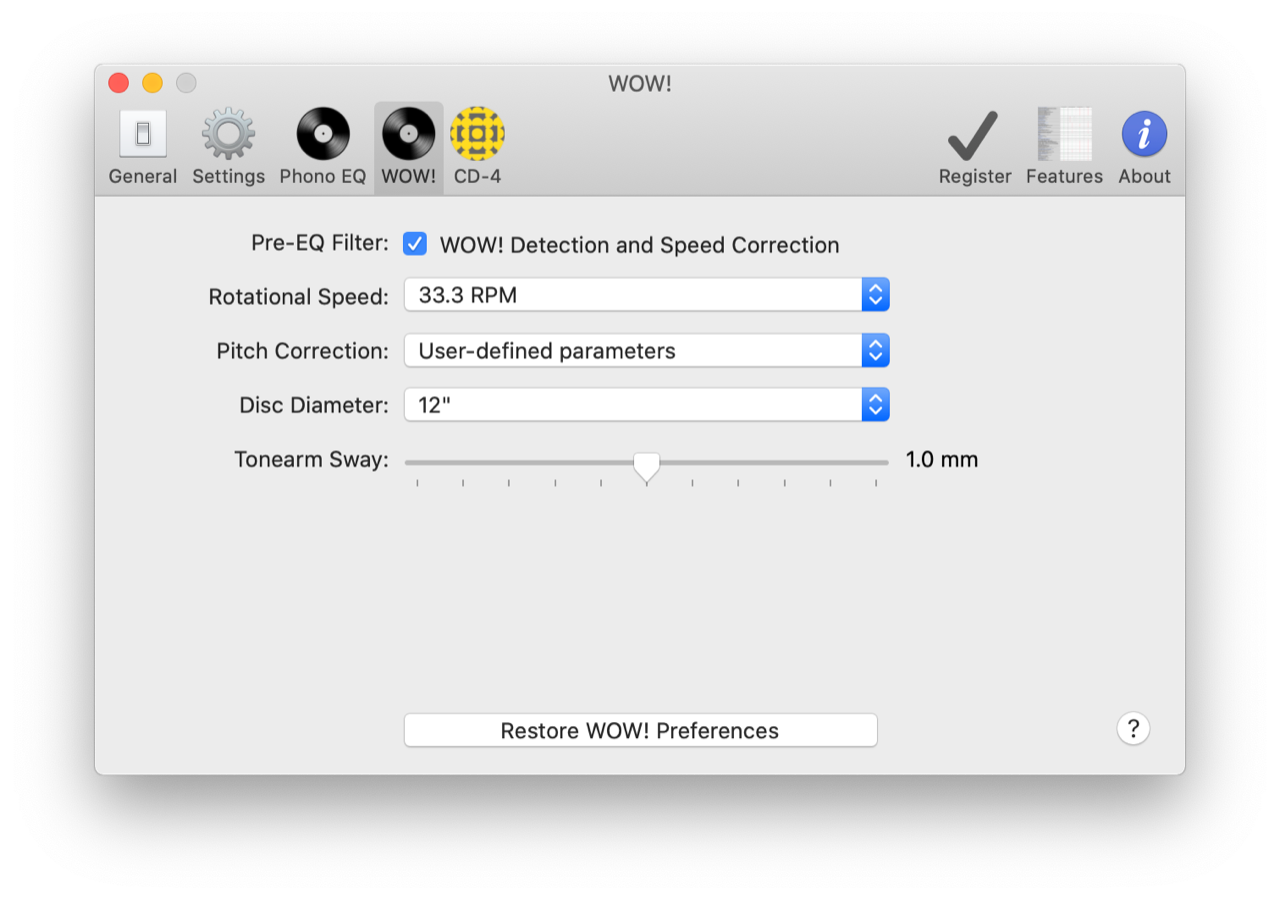
Needle-drops of speed-varying material must be made at 96kHz or 192kHz sampling rate. The extra bandwidth above the audio information is useful is determining the phase and frequency of the pitch variation, and the finer "structure" of the dual-rate file also enables finer quantisation of the pitch correction6.
Prior to recording, the degree of "sway" or weave of the cartridge as it plays the outer few grooves of the record must be measured. The measurement of weave is programmed via a slider in the WOW! preferences dialogue which runs from 0 mm to 2mm in steps of 0.2mm. After that, the processing is entirely automatic.
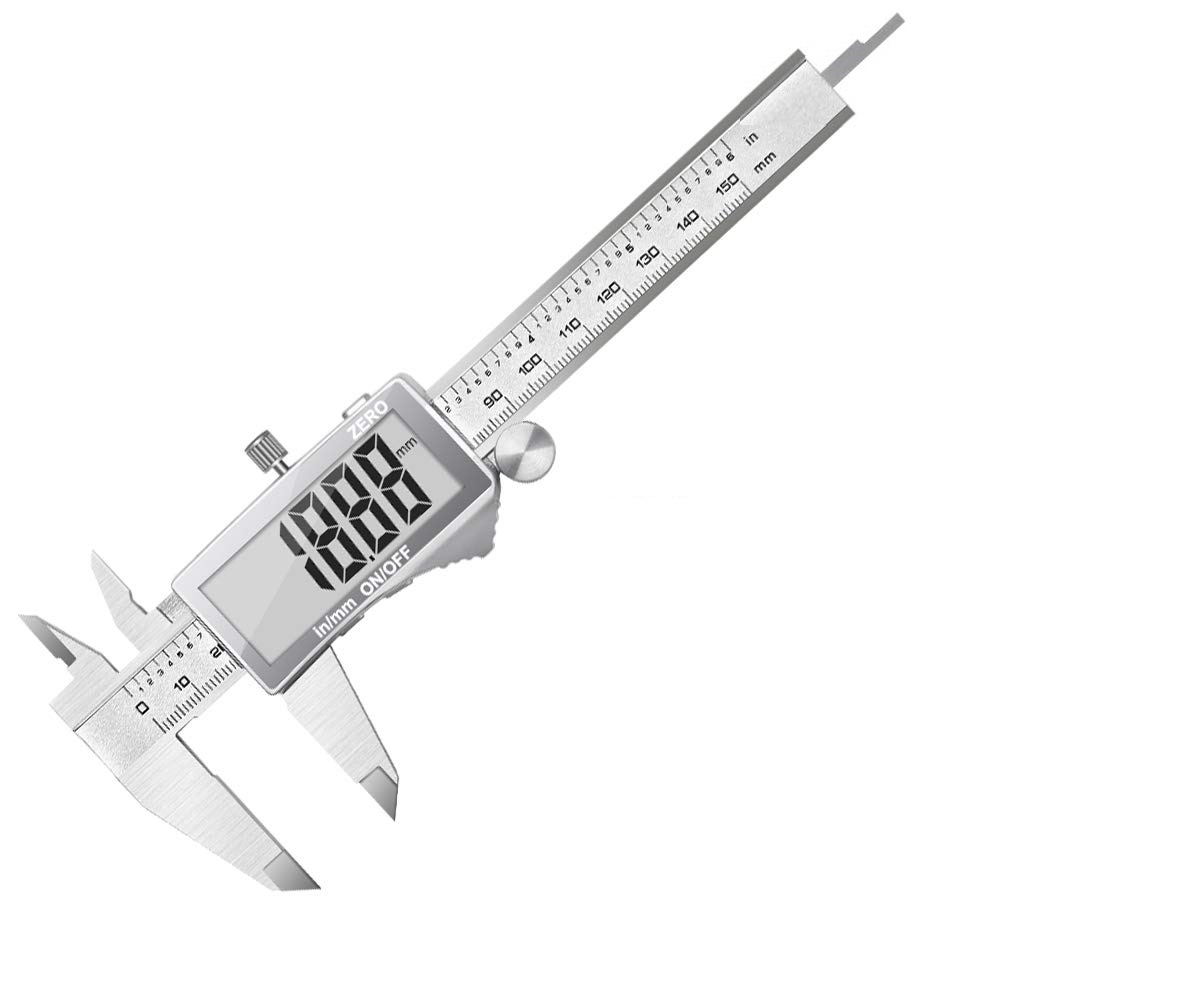
When a record is eccentric, the true centre of the recorded spiral orbits the spindle-centre and the cartridge swings or sways as it plays the eccentric grooves (see the GIF at the top of this page). The degree of sway or weave of the cartridge is equal to 2 × the offset.
The technically correct place to make this measurement is with the stylus circling endlessly in the locked groove at the end of the side. When tracing this perfectly circular groove, the lateral "sway" of the cartridge is solely due to the eccentricity of the spindle-hole in relation to the groove. The only disadvantage of this approach is the awkwardness in leaning over the playing surface to take the measurement and accidentally touching the disc surface or bumping the tonearm. For that reason, the sway measurement is most conveniently made at the outside edge of the disc as the first few turns are played 5.
Our advice is, don't try and make the measurement as the record turns under the impulsion of the motor. This is your chance to be a DJ! Lower the stylus on the record lead-in groove with the turntable stationary and the monitoring amplification live. Advance the record clockwise until you hear audio. You have identified the first sounding groove.
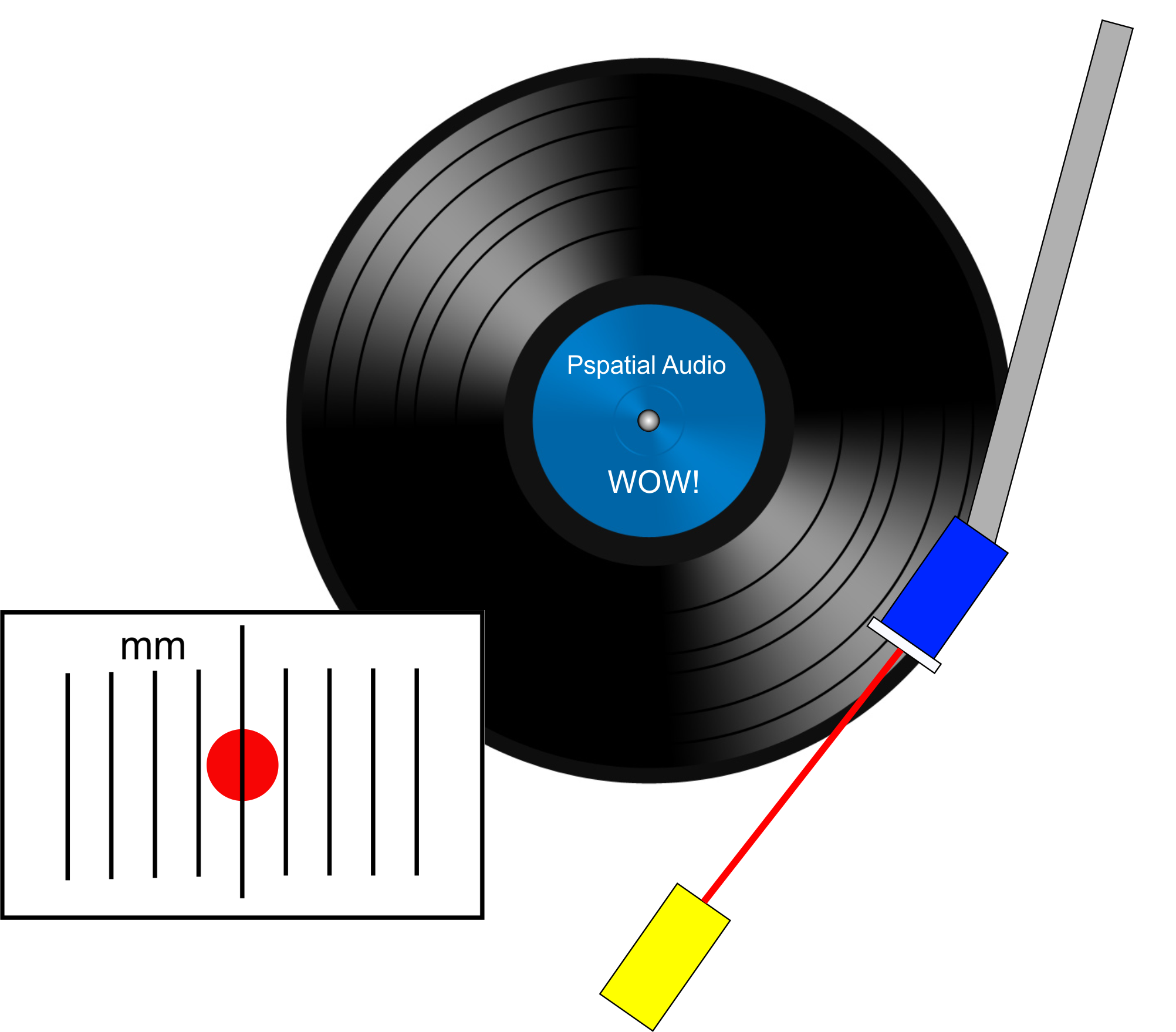
Now continue to rotate the platter clockwise until the cartridge is at its innermost turning diameter. You can, carefully, "rock" (advance and retard) the platter to identify the precise point of minimum travel. (Don't overdo this as it isn't great for cartridges or grooves.) Position your measuring device against some easily identifiable feature - for example, the edge of the cartridge body. Now continue to turn the platter clockwise until the cartridge is at its largest diameter of travel. Read off the sway measurement from the measuring device which must - of course - remain absolutely stationary between the two measurements.
You may be thinking, because we have advanced the cartridge a ½-turn between the points of maximum and minimum sway, we ought to incorporate the extra lateral movement of the cartridge due to the groove spiral in the final figure. If you want to do this, subtract 0.05mm from the reading. In practice, this may usually be ignored.
The method we have developed at Pspatial Audio during the development of Stereo Lab WOW! is to attach a small paper scale (marked in mm) to the front of the cartridge and use a static laser pointer held in a retort stand.
By shining the laser at the scale, it's not difficult to measure the cartridge sway to better than ¼ mm and thereby for the program to compute the offset to an accuracy of ≈ 0.1mm. This is sufficient to correct the pitch variation to the limits of the algorithm. Adding a small lens of a few dioptres9 to the front of the laser pointer helps in sharpening the bright spot on the paper scale.
Time taken making careful measurements saves time in processing the needle-drops in Stereo Lab. An alternative approach is to take a more perfunctory approach to measurement and subsequently to process the track multiple times in Stereo Lab experimenting with correction values above and below estimated swing value.
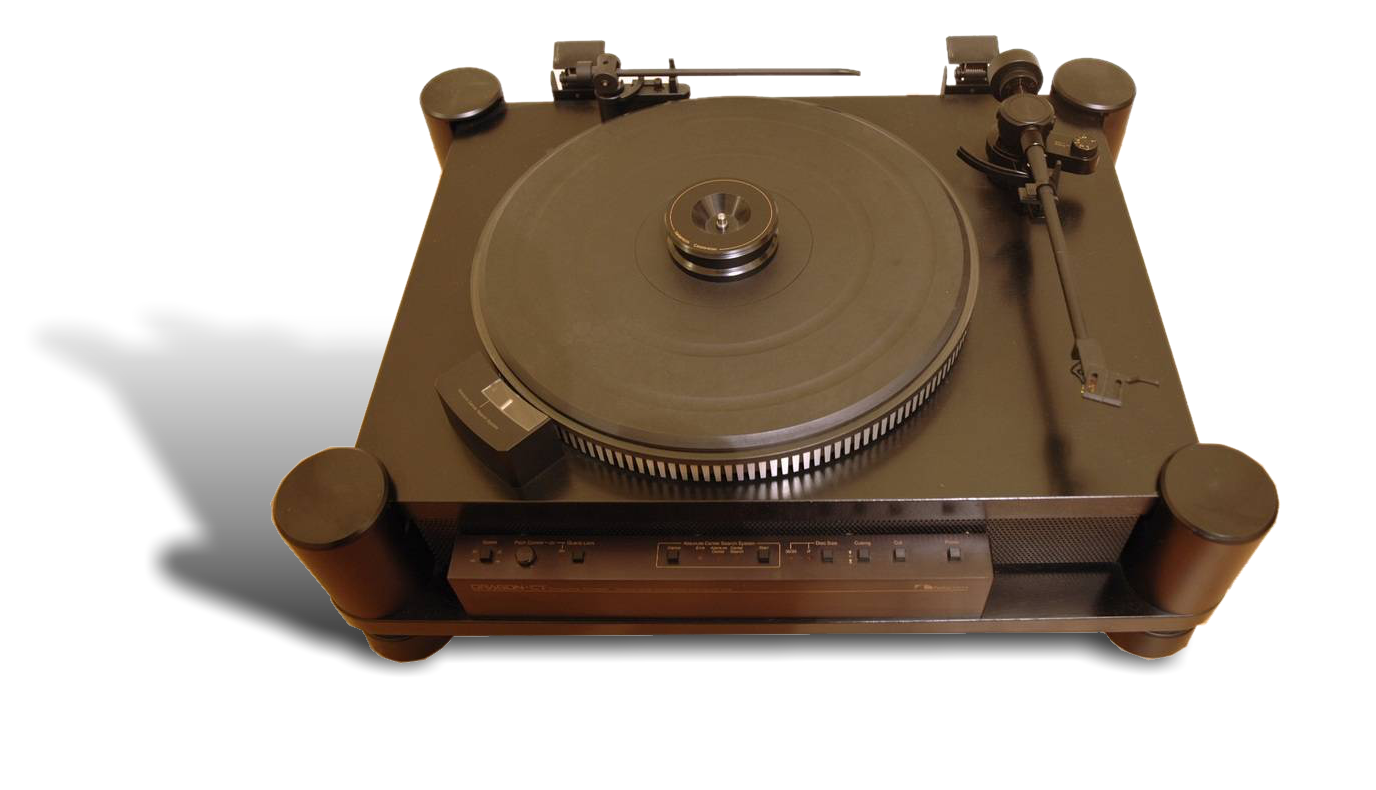 Until now, the centring of eccentric records required the rather fraught opening out of the record's centre-hole and then centring the record by hand. Alternatively, one could obtain one of Nakamichi's automatic centring turntables (the rare Dragon CT or the very rare TX-1000).
Until now, the centring of eccentric records required the rather fraught opening out of the record's centre-hole and then centring the record by hand. Alternatively, one could obtain one of Nakamichi's automatic centring turntables (the rare Dragon CT or the very rare TX-1000).
These turntables incorporate a lower, driven metal plate upon which rests a massive glass platter with centre spindle. The turntable is computer controlled and uses a special sensor tonearm to measure the eccentricity, whereupon a small plunger comes out of a housing next to the platter and gently nudges the glass top-platter until the record turns about the exact centre of the groove spiral.
In Stereo Lab, this centring process is effected in digital signal processing.
As the paragraphs below will illustrate, the manufacturing standards of records permit sufficient mechanical latitude for audibly significant timebase distortion (wow) in reproduction - even if entirely acceptable records are played on a perfectly dimensioned and maintained playback deck.
Like the Nakamichi Dragon CT and TX-1000, the ambition of WOW! in Stereo Lab goes beyond rescuing damaged, rogue discs, to improving the quality of reproduction from standard records.
We do recommend a direct-drive turntable for needle-drop recordings destined for WOW! correction. The greater speed stability of these decks ensures better accuracy in correction.
The smallest detectable pitch variation for human beings occurs around 500Hz and is measured to be about 1Hz difference at 500Hz. That's to say, a change of 0.2%. Pitch perception deteriorates above and below this frequency¹. So a speed variation (a "wow") of less than ±0.1% represents a performance which is irreproachable. Indeed this is a figure which the best quality record decks regularly achieve². A figure of ±0.2% peak or 0.4% peak-to-peak variation is taken as the lower bound in the Stereo Sauce WOW! correction algorithm. Experiments have shown this is the perceptible lower-bound of wow performance¹.
The RIAA dimensional specification for phonograph records is oddly silent on the tolerance of the position of the centre of the hole from the centre of the Archimedian spiral formed by the recording grooves. An earlier NAB standard required that ..... the disc center hole be concentric with the recorded groove spiral within 0.005 inches (0.127mm)³. But this is a broadcast standard for transcription discs, not for manufactured records.
The same figure (eccentricity of hole to groove spiral must be ≤ 0.005") was included in British Standard BS1928-1965 for commercial discs, but the modern standard is IEC 60098:1987 which says (Section D.12.2.), the distance of the centre of the centre hole from the centre of the groove spiral shall not exceed 0.2mm (0.0082").7 The origin of this figure appears to be from an earlier German standard (DIN 45547).
If we look at the figure (left) we can see that, at the furthest point from the turning centre, the stylus will "think" it's tracing a groove with a radius of (R + d).
And, at its closest from the turning centre, the stylus with "think" it's running in a groove with a radius of (R - d).
Given that the constant angular velocity drive, the speed in the groove will be directly proportional to the circumference of the groove and therefore directly proportional to radius.
Thus, the maximum speed variation will be (R + d) / (R – d)
Or, because d << R peak to peak wow is about 2d / R ......... (EQ.1)
Notice that, because the offset (d) stays the same but the value of R changes as the record plays, wow due to eccentricity becomes worse the nearer the groove is to the centre of the disc. Also note that rotational speed (33, 45, 78 RPM) plays no part in this expression. Only the geometry affects the percentage speed variation.
The RIAA standard limits of inside and outside groove diameters are:
Plugging-in our IEC-allowed 0.0082" offset (0.2mm), and assuming a groove radius of 60.3mm (innermost groove of the record), we get,
(0.4) ⁄ (60.3) = 0.0066 or a 0.66% peak-to-peak speed variation.
Which demonstrates that the IEC standard tolerance is not an especially ambitious figure. Wow distortion due to a hole manufactured at the limit tolerance of international standards is above the threshold of perception¹. The old NAB standard (and British Standard 1928) were better as an allowable tolerance of 0.127mm results in a wow figure of 0.4% pk-pk which is right on the threshold of perception and well judged¹.
Fit
There's another issue we need to consider and that is the size of the centre-hole in the record (and its tolerances) and the dimensions of the centre spindle (and its tolerances).
The 1987 IEC (98) standard for record centre-hole size is 7.24mm -0/+0.09mm (0.285 to 0.288") and this figure is consistent across older British (BS1928-1965) and German (DIN45547-1981) standards and American standard (RIAA-1963); the latter specifying 0.286" +0.001" -0.002".
If the spindle on a commercial record player is machined to the smallest value in the tolerance range of record hole size (7.24mm or 0.285") some records still prove difficult to remove due to the flexibility of the record pinching the spindle. Manufacturers have therefore selected a range of slightly smaller dimensions for the centre spindle - with a de facto preference for 9⁄32" (7.14mm). Designers of cheaper turntables sometimes choose a figure below this, and some manufacturers (Thorens for example) deliberately made the spindle at the top end of the range so that records are a tight fit.
If we take the default turntable manufacturers' "standard" as 9⁄32" (7.14mm) and a worst case for an oversized centre-hole as 7.33mm, equation 1 reveals that a carelessly placed record could be 0.19mm offset and be responsible for a 0.63% peak-to-peak speed variation.
Sub-standard
By no means were all records made to these (not especially rigorous) standards. It's not uncommon to find examples of the centre-holes of manufactured discs offset by up to a millimetre from the spiral-groove centre8. And values greater then this are relatively common with older, shellac discs.
Substituting in the equation 1, we can see that an centre-hole offset of 1mm leads to an overall speed variation at the innermost groove of 3.3%, a totally unacceptable degree of distortion.
No correction is applied in Stereo Lab until we arrive at a spindle-hole offset which produces a frequency change above the threshold of perception¹. A 0.1 mm offset is the lower end of the WOW! correction scale. A disc manufactured entirely within the limit tolerance allowed by the standards may thus still be corrected by Stereo Lab thereby offering a standard of speed stability better than most turntables can ever achieve alone. Once again, the ambition of WOW! in Stereo Lab goes beyond rescuing damaged, rogue discs, to improving the quality of reproduction from standard records.
The upper limit for WOW! correction is an arbitrary 1mm offset. Note 4
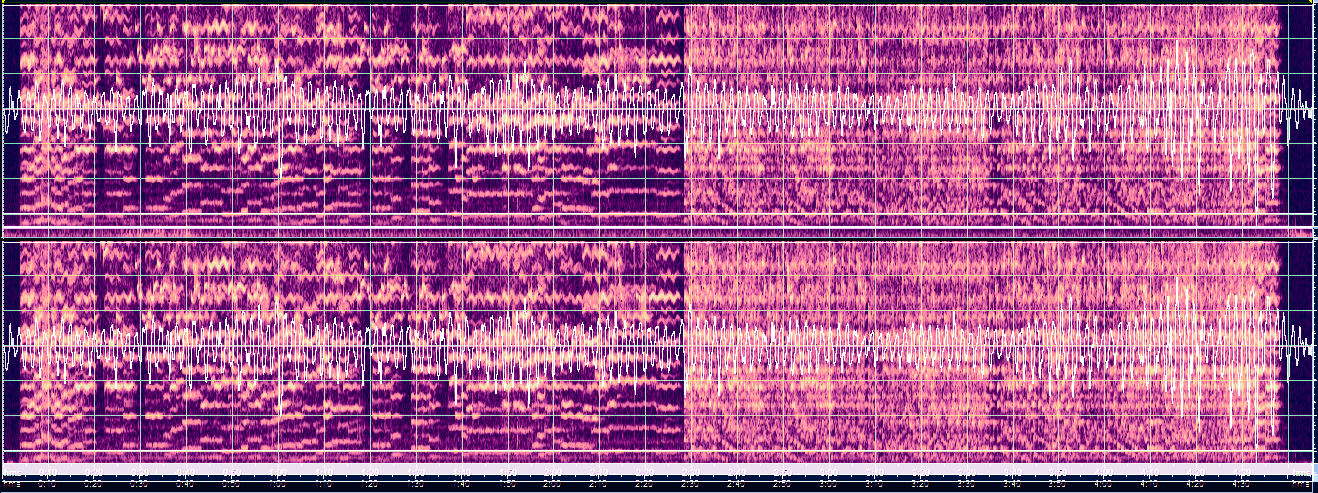
Here the correction signal derived in Stereo Lab is overlayed on a spectrogram of the original music
Sek and Moore's study involved the presentation of two successive steady tones with slightly different frequencies. The subject was asked to judge whether the first or the second had the higher pitch. The order of the tones was varied randomly from trial to trial, and the minimum perceptible change of frequency was taken as that frequency separation between the tones at which the subject achieved a certain percentage of correct responses (75%). This measure is called the difference limen frequency (DLF) Sek and More found it to be 0.2% at 500Hz.A second measure of threshold change-of-pitch perception invetigated by Sek and Moore was using tones which were frequency modulated (FM) at a low rate to determine the amount of modulation required for detection. This measure is called the frequency modulation detection limen (FMDL). Clearly the FMLD test is closer to the case of pitch perception due to the unsteady speed of a gramophone record. The study showed that FMLDs are always higher than DLFs at all frequencies.
So taking the low limit for DLF (0.2% pk-pk at 500Hz) maybe over-safe as the lower bound for the perceptibility of wow. This is confirmed in an old, but very good, paper by Hisao Sikai of NHK (Perceptibility of Wow and Flutter JAES, June 1970) who determined in extended experiments that the threshold for peception of wow on the most critical music programme reproduction (found to be solo piano music) is 0.14% RMS which is equivalent to ±0.2% peak or 0.4% peak-to-peak variation. So this figure is taken as the lower bound in the Stereo Sauce WOW! correction algorithm.
However, the DLF is worth knowing because it does give an indication of the acceptable quantisation of the correction process. Provided pitch discontinuities are restricted to 0.2% in either direction, the pitch change won't seem to "jump".
2. Turntable speed accuracy is measured using a test disc cut with a 3150Hz steady tone. DIN 45 465 is one such and has the great attribute of a locked outside groove which allows the disc to be carefully and accurately centred, thereby taking disc eccentricity out of the equation. With this done, it is possible to measure down to around 0.06% unweighted wow, sufficient to identify the performance of top quality turntables. The best direct-drives manage this level of performance. Most belt drives are worse with measured wow being about 0.12% pk = 0.24% pk-pk.
3. NAB AUDIO RECORDING AND REPRODUCING STANDARDS FOR DISC RECORDING AND REPRODUCING. Engineering Department, National Association of Broadcasters, 1964
4. It's worth putting this into a musical context. Although a speed (and therefore pitch) variation of ±1% is enough to leave you feeling pretty queasy as the music sways like a drunk, it's still only a fraction of a musical interval. A well-tempered semitone interval represents a 6% frequency change relative to its nearest neighbours.
5.
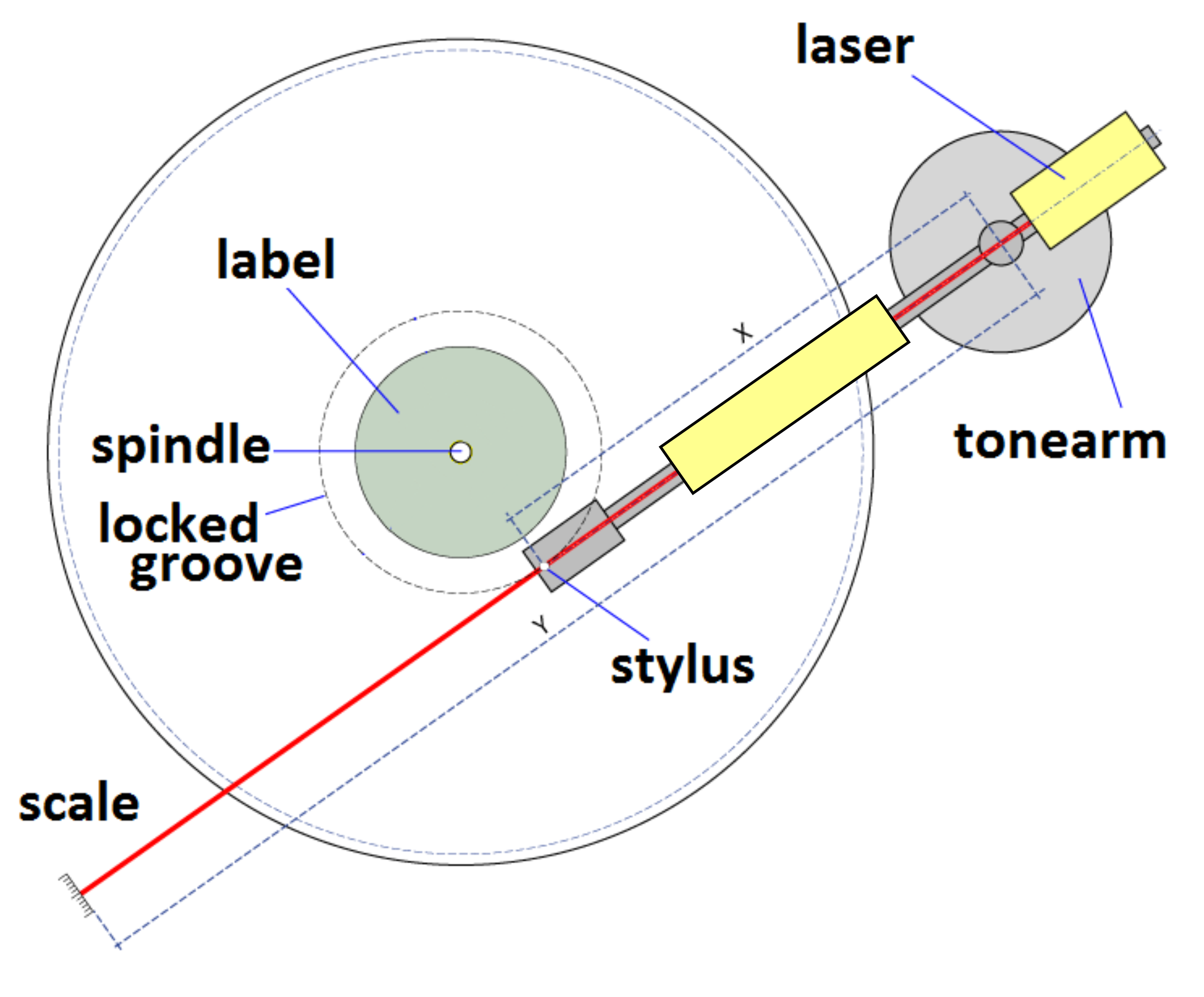 An alternative solution which sidesteps the difficulties of leaning over the record with sharp measuring instruments, and also enhances the accuracy of the measurement, was described by S.E. Grimm in a now withdrawn blog.
An alternative solution which sidesteps the difficulties of leaning over the record with sharp measuring instruments, and also enhances the accuracy of the measurement, was described by S.E. Grimm in a now withdrawn blog.
By the simple means of attaching a small laser pen/pointer to the tonearm (or counterweight), the moving laser spot, due lateral movement of the tonearm, may be projected onto a nearby wall. Provided the distance of the tonearm pivot to the stylus is known and a multiple of this distance is arranged in the distance of the pivot to the wall, the movement of the spot on the wall may be measured as a multiple of the movement of the stylus thereby increasing the accuracy of the measurement. The problem with this technique is the amount of temporary weight it adds to the tonearm (or counterweight) which significantly complicates setting-up and tearing-down.
6. New Algorithms for Wow and Flutter Detection and Compensation in Audio. Czyzewski A. et al. Paper given at AES 118th Convention, Barcelona, Spain, 2005 May 28–31. This paper has a good set of references to previous studies and methods.
7. IEC 60098:1987 Analogue audio disk records and reproducing equipment. Available at: https://webstore.iec.ch/publication/734
8. Novel Wow and Flutter Meter, Ockleshaw, R., Wireless World, December 1971. Ockleshaw referes to a letter in Hi-fi News Sept 1971 which recounts the 1mm offset figure for commercial records.
9. Although there is no international name or symbol for this unit of measurement within the international (SI) system of units, the dioptre is a widely adopted unit of the refractive power of a lens. It is equal to the reciprocal of the focal length (in metres). So, if the laser pointer is 0.5m from the measurement scale, you need a lens of 2 dioptres to bring the beam to focus on the target. We found lenses scavenged from low-cost reading glasses worked well.
 Pspatial Audio Home page
Pspatial Audio Home page
For all support issues, go here.
For Pspatial Audio sales, email: sales@pspatialaudio.com
